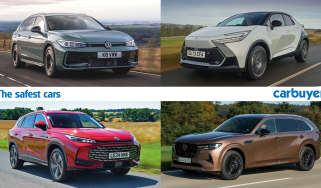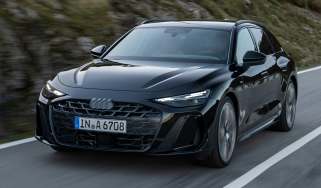Child car seat laws: how to keep your child safe and avoid a fine
What are the current child seat regulations in the UK? Here we give you a complete rundown on what you need to know
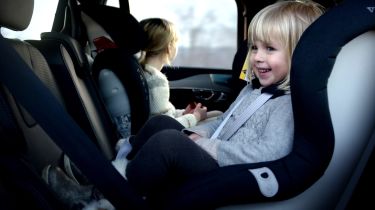
It’s essential to understand the laws surrounding child car seats if you plan to carry a child in your car. Not only do child car seats improve safety in the event of a collision, they are a legal requirement in the majority of cases for babies, toddlers and children. Driving a child without a child car seat, not using the right one, or fitting one incorrectly is not only dangerous, but could also net you a fine of up to £500.
 What is ISOFIX in a car and how do you use it?
What is ISOFIX in a car and how do you use it?
While pressure from governments and consumers has resulted in a fantastic level of safety in modern car technology, the laws surrounding child car seats can be confusing. In this guide we’ve covered the key rules you must follow in order to keep your little ones safe and to stay on the right side of the law.
What is the law for child car seats?
In the UK, it’s a legal requirement for all children under the age of 12 or under 135cm/4ft 5in tall to sit in an appropriate child seat.
Once a child is 12 years old or 135m tall/4ft 5in tall – whichever comes first – it’s no longer a legal requirement. Instead, the child can sit in one of the car’s ordinary seats and use an adult seatbelt.
A car seat should be mounted in the back seats in a rear-facing position whenever possible. For children under 15 months, it’s a legal requirement to use a rear-facing i-Size child car seat.
Child seats must permanently be fixed into position via a seatbelt with a diagonal strap, a lap belt, or ISOFIX anchor points. You must never fit a child seat to a side-facing chair; if you must use the front passenger seat, the passenger airbag must be turned off.
It is the responsibility of the driver to ensure that any children in the car are using the correct safety equipment, such as an approved child safety seat, which is correctly fitted to the vehicle according to the manufacturer’s instructions. Failing to adhere to child car seat laws can result in a fine of up to £500 and potentially put a child at risk in an accident.
There are a few exceptions to be aware of:
- If a car does not have a seatbelt: A child over the age of three can travel without a child car seat and without an adult seatbelt, as long as they’re in a back seat.
- If travelling in a taxi: If the taxi driver hasn’t provided an appropriate child seat, children can travel in the back seats without one. Children aged three and over must wear an adult seatbelt, children under three should not wear a seatbelt.
- If travelling in a coach or minibus: In a coach, children are not required to use a child seat or an adult seatbelt if they’re not available. In a minibus, children aged three and over must sit in a back seat and use a child seat if it’s available, or a seatbelt otherwise.
- Unexpected journeys: Only if a journey is unexpected, necessary and short distance (i.e. an emergency) can a child travel in a car without a child car seat. Children aged three and over can use an adult seatbelt, while children under three can only travel in a back seat without a seatbelt.
- No room for a third child seat: if there’s no room for a third child seat in the back of a car, children aged three and older can sit in the back with an adult seatbelt. Children under three must sit in the front in an appropriate child car seat with the passenger airbag switched off.
- If your child has a disability or medical condition: The same laws apply to children with disabilities or medical conditions, although a doctor can issue an exemption certificate if the child is unable to use a seatbelt or other restraint.
The appropriate child car seat is determined by a child’s weight, height, size or age. These measurements should be listed on the child seat’s packaging or in the detailed specification.
Height or weight-based car seats?
When buying a child car seat, you should check whether the model is measured by height or weight. Most child car seats, including those that meet R44 specifications (explained later in this article), are split into groups according to the weight of the child they are made to protect. These car seats will be divided into the following categories:
|
Child’s weight |
Group |
Seats |
|
0kg to 10kg |
0 |
Lie-flat or ‘lateral’ baby carrier, rear-facing baby carrier, or rear-facing Baby seat using a harness |
|
0kg to 13kg |
0+ |
Rear-facing baby carrier or rear-facing baby seat |
|
9kg to 18kg |
1 |
Rear- or forward-facing baby seat |
|
15kg to 25kg |
2 |
Rear- or forward-facing child car seat (high-backed booster seat or booster cushion) |
|
22kg to 36kg |
3 |
Rear- or forward-facing child car seat (high-backed booster seat or booster cushion) |
When purchasing a child seat with these designations, it is essential to measure your child's weight and buy the correct car seat accordingly.
On the other hand, i-Size, or R129 child car seats are developed according to the child’s height instead of weight. You will usually find the height specifications labelled on the product's packaging or detailed specification, so make sure that you check this information closely before making a purchase.
It is a legal requirement that children under 15 months are positioned in a rear-facing i-Size child seat. Once the child is older than 15 months, most i-Size child seats can be converted into front-facing seats, though you will need to ensure that the seat’s specifications are correct for your child’s height.
What are R44, R129 and ‘i-Size’ car seats?
There are only two types of legally approved child car seats that can be used in the UK, so it’s important to check any seat you purchase meets one of the following United Nations regulations for use on public roads:
- United Nations standard, ECE Regulation 44/03 or ECE 44/04 (R44)
- United Nations R129/i-Size
The original UN standard R44 regulations were introduced in the early 1990s. However, all car child seats made after 2018 must comply with the updated and even safer R129 regulations. The revised legislation is commonly referred to as i-Size, and any new models on sale today need to meet this standard to be sold and used legally in the UK. If you’re looking to buy a new child car seat, look for the i-Size designation to ensure it meets all the current safety laws. However, if you have an older R44 model, it can still be used, just as long as it complied with the appropriate legislation when it was new.
The iSize standard was introduced to enable modern child car seats to work in conjunction with the latest safety equipment in vehicles. One of the main differences between i-Size and R44 compliant child car seats is that i-Size enables babies and toddlers up to 15 months of age to sit in a rear-facing position, rather than the 9-12 month maximum for older rules. Research shows that a rear-facing seat is the safest position for a baby or toddler in the event of an accident, so i-Size seats are designed to elongate the age at which children can be protected in a rear-facing position.
When buying a child car seat, the model you choose must be designed for your child’s weight, size, height or age.
What about ISOFIX-mounted child seats?
The ISOFIX system enables child seats to be mounted to specially designed anchor points of the vehicle’s body for increased support in the case of an accident. All UK-sold i-Size seats feature ISOFIX support, though not all R44 seats do. It’s worth checking the small print to see if a child car seat features ISOFIX support, as this can add an extra level of safety to your child seat.
It's also worth bearing in mind that if your car does not feature ISOFIX support, an i-Size child seat may not fit correctly. ISOFIX anchoring points became mandatory for cars with four seats or more in November 2012, but appeared in many models before this date. Be sure to check whether the chair you’re looking at matches your vehicle's specifications.
The most important factor when deciding on a child seat is that it fits perfectly into your vehicle and is specifically designed for your child’s height or weight. If your car does not feature ISOFIX support, you may need to source an older model that is compatible with your vehicle and your child. However, we wouldn’t recommend buying a second-hand child seat, as you can’t be sure of its history and whether its safety has been compromised due to a previous incident.
What’s the best advice?
Rear-facing child seats such as the new R129 i-Size models offer the best safety when it comes to car seats, so if your car uses ISOFIX support, they will be the best product to keep your children safe.
Our advice is to check your car’s handbook to find out which seats are supported before you buy a child seat, and always ensure that the seat is designed for the height or weight of your child. Finally, it is vital to ensure that any child seat is correctly fitted to the vehicle, otherwise it won’t be able to perform its intended function.
Frequently Asked Questions
All children must be seated in a child car seat until the age of 12 or until they’re 135cm/4ft 5in in height, whichever comes first. After this, they must wear an adult seatbelt.
Now you understand the law surrounding child car seats, read our guide on choosing the best toddler car seat
Recommended
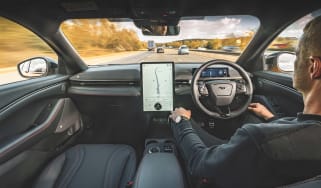
In-car safety assistance systems leaving drivers confused and dissatisfied
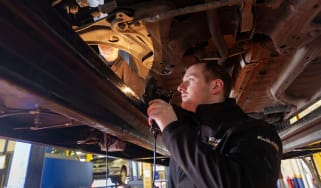
MoT guide: cost, info and what happens if your car fails
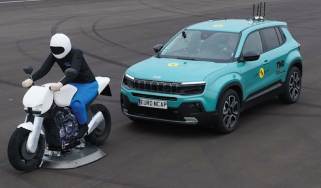
Jeep Avenger fails to impress in latest round of Euro NCAP crash tests
Most Popular
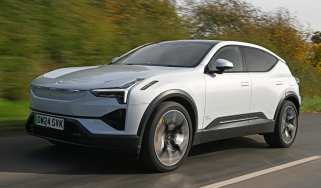
Polestar 3 review – upmarket and well-built SUV contender
Newsletter signup form
Tips & advice

Car dashboard warning lights: what does each symbol mean?

Electric car charging stations: public networks, charger types, apps and maps

